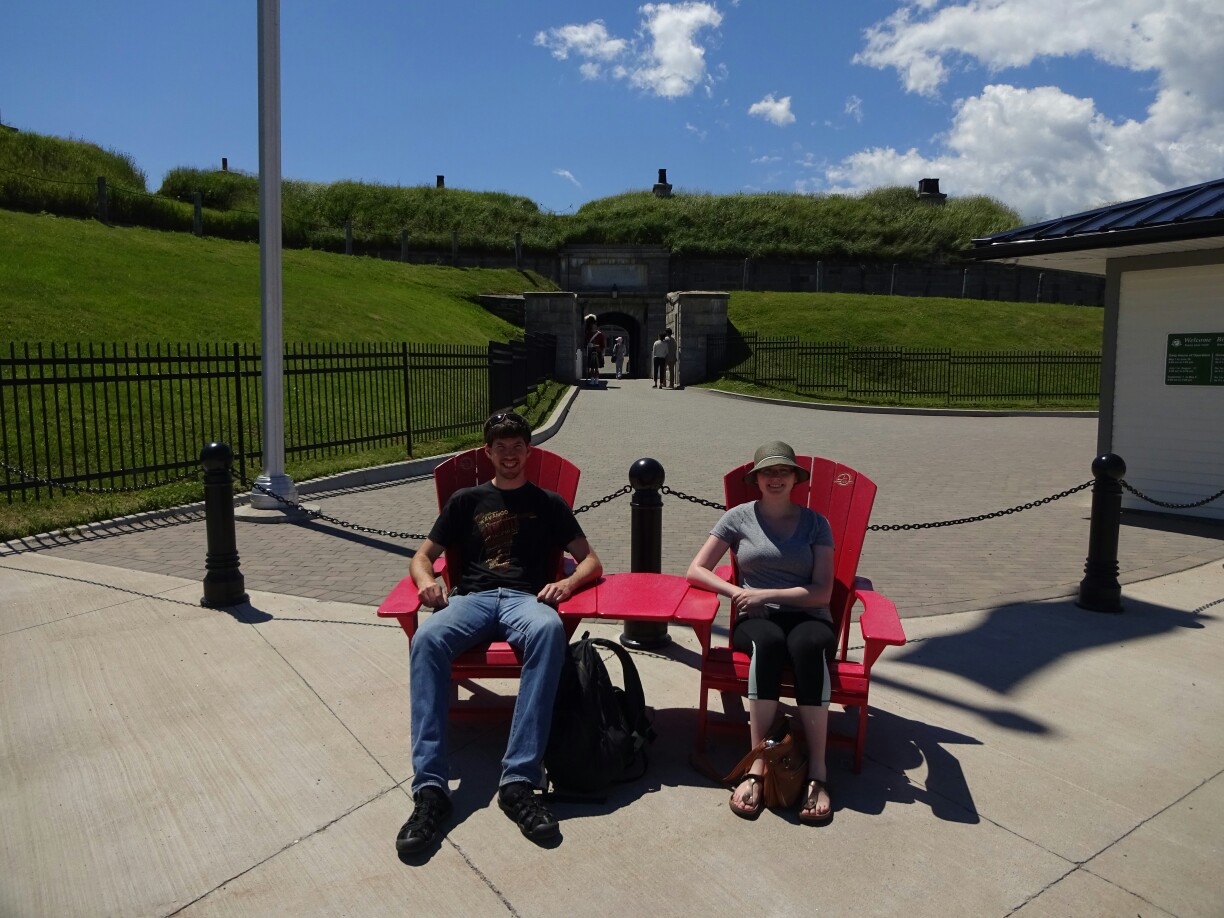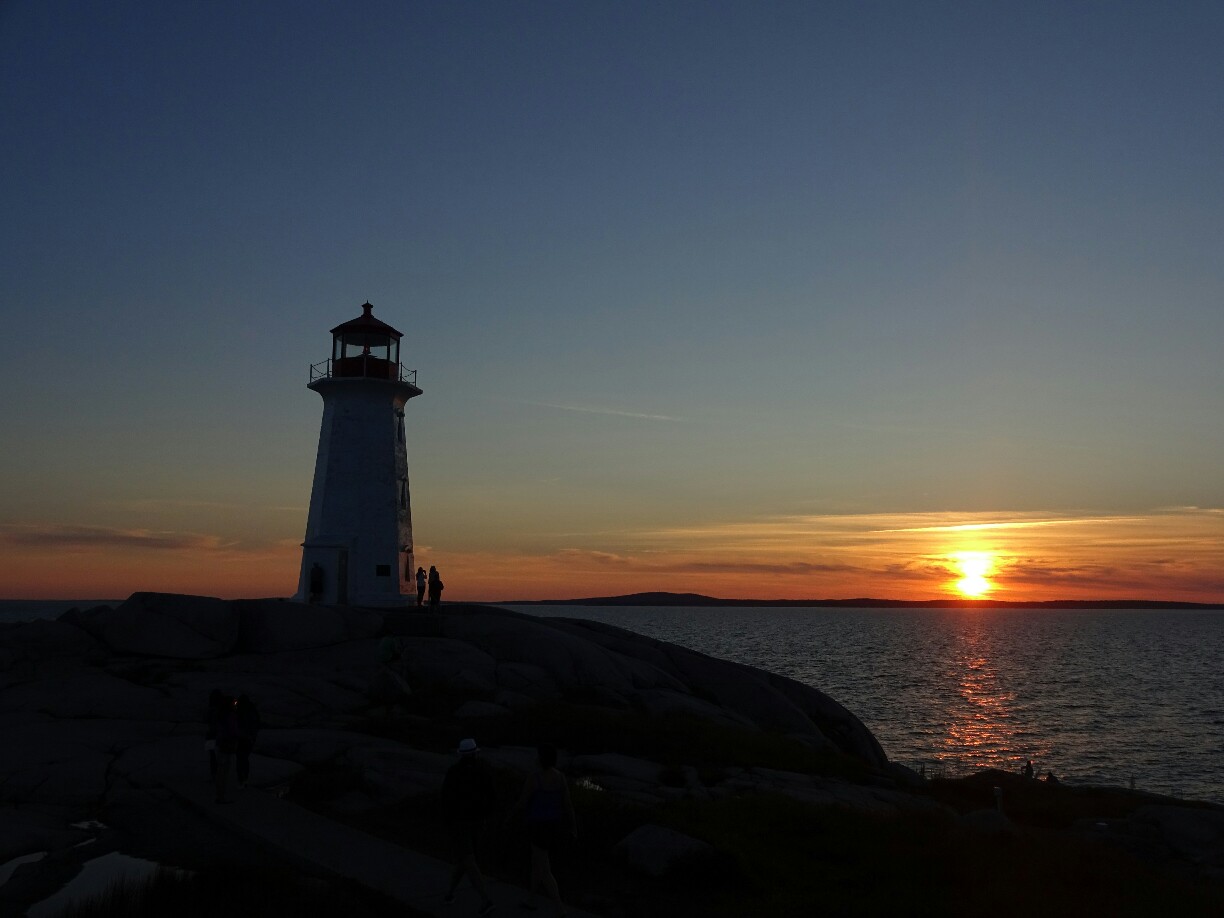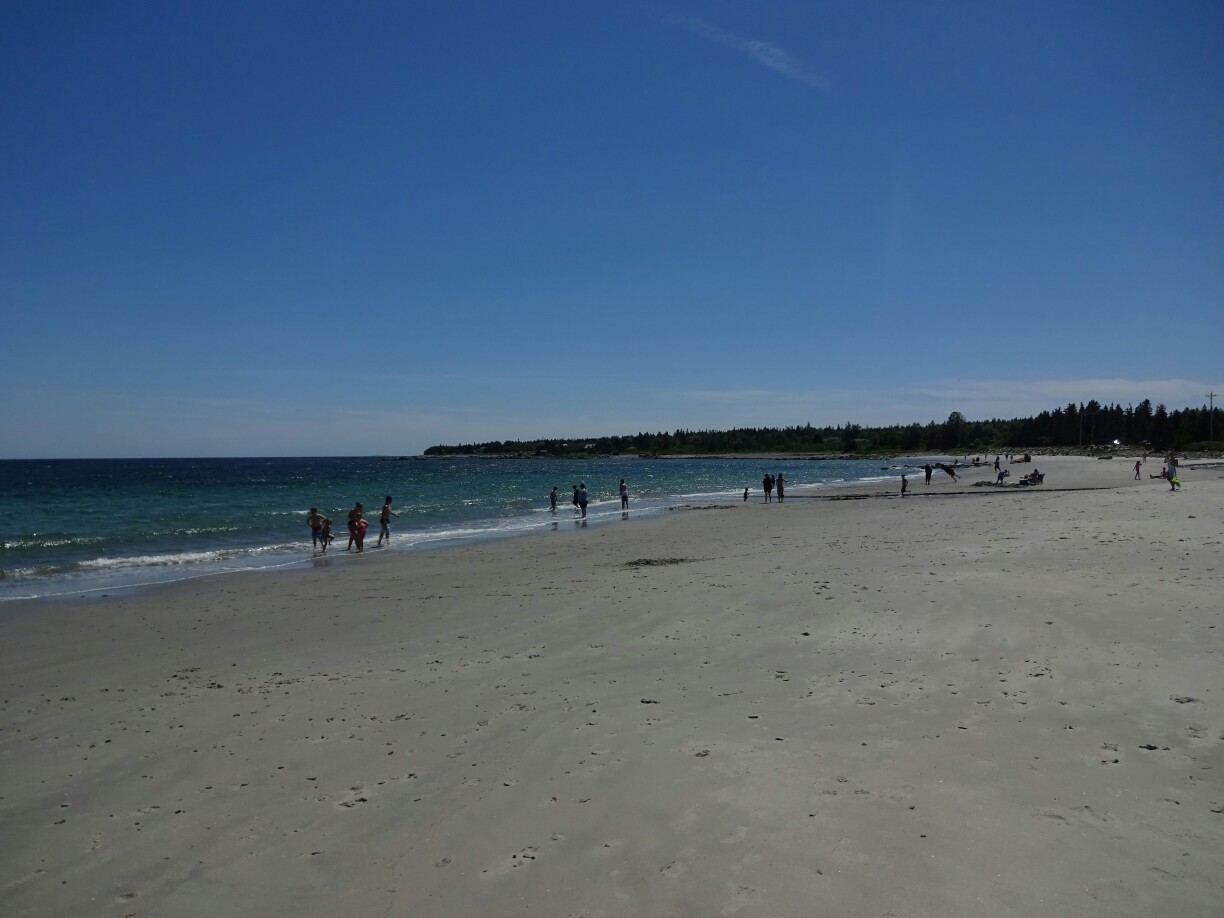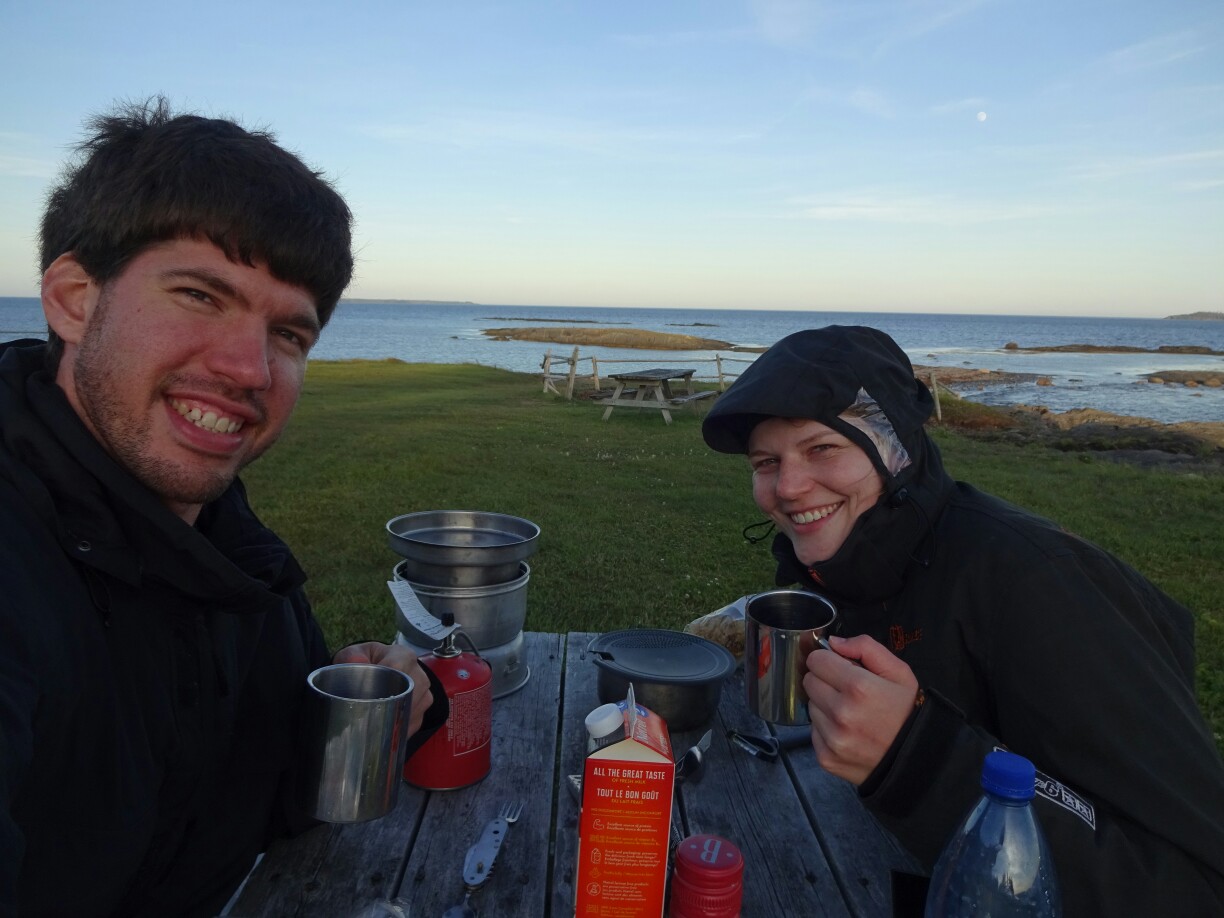From “Blomidon Provincial Park” Maren and I drove back to Halifax to pick up my friend Raghu, who had arrived from Calgary. Now was the perfect time to have a closer look at this bustling city. While walking along the waterfront, we found out about a jazz festival that would start the next day. Even better was the fact that it was free and open to the public for the afternoon shows.


But for that day Maren and I decided to go on a city tour with the “Harbour Hopper” first. Those giant amphibious busses were originally used by the army and were bought and refitted for tourism after their time in service. From the elevated back of the bus we had a great view and a bit of a breeze cooling us down during the tour, where the first part took us through the narrow streets of downtown.

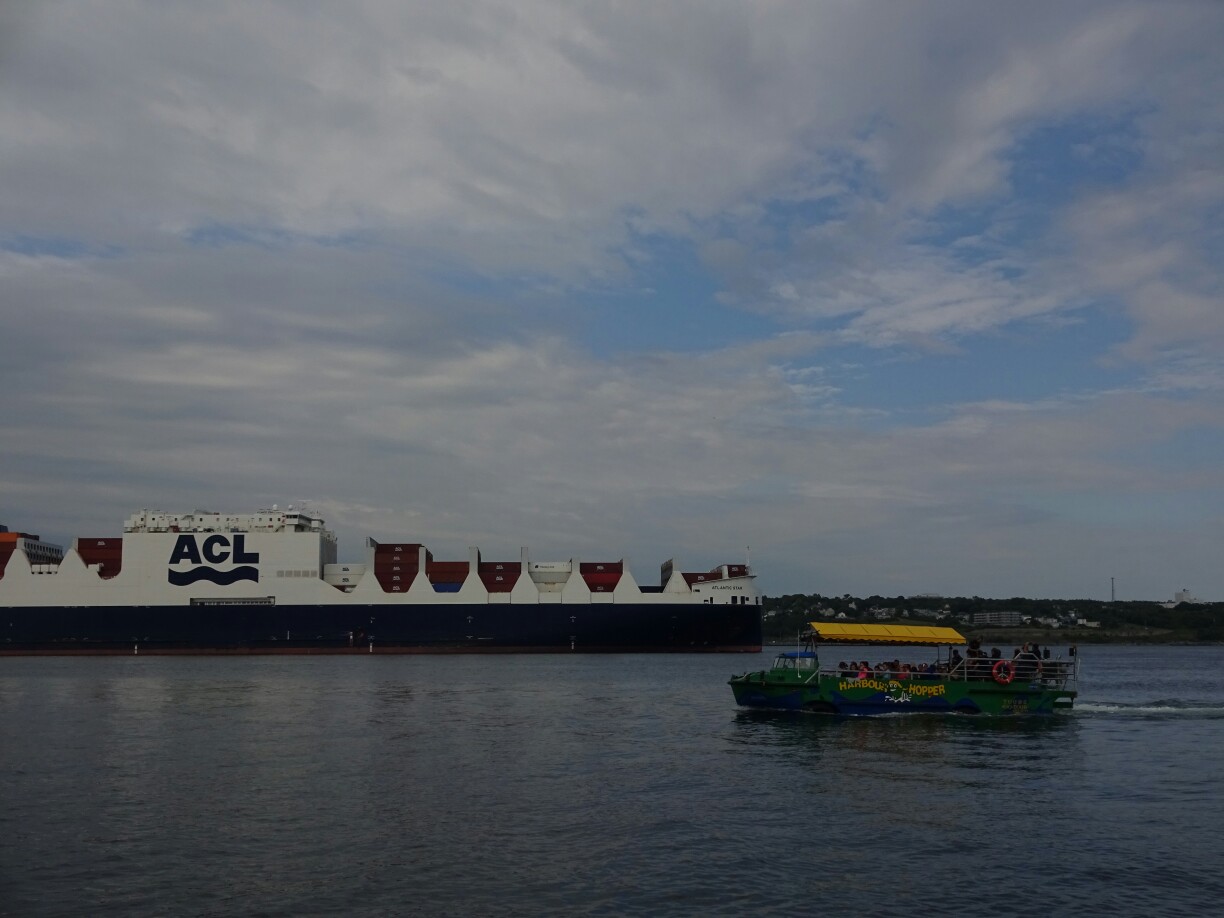
Our transition from land to water happened with a big splash and suddenly the bus was swimming. We had a closer look at the large container ships that were going in and out of the port and had a better overview of the downtown area. Most of this is less than hundred years old, as the largest man-made explosion before the development of nuclear weapons had flattened most of the buildings in an 800m radius. Two ships, one carrying high explosives, collided in the harbor in 1917 and caused this what is now known as the “Halifax Explosion”.
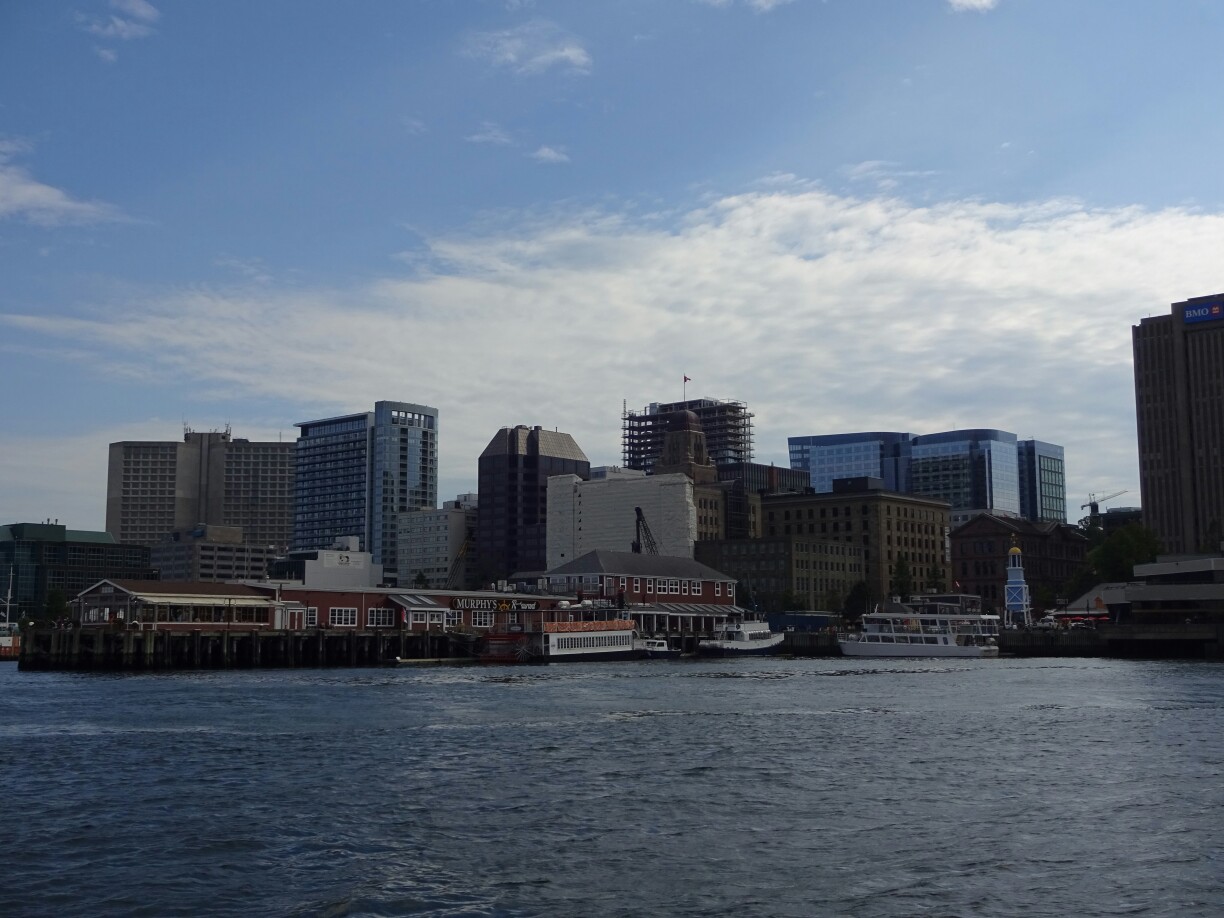

The next day we listened to the music of “Quinn Bachand’s Brishen” and the “Riot Squad” at the jazz festival and then continued to explore the waterfront. It was good to relax a bit before we got back on the road for some more adventures up north on the Cape Breton Island. Meanwhile Raghu was getting eager to leave the city and to get out onto the rugged coast of Nova Scotia, as this the reason why he had come so far.


Soon enough we were working on it and had reached the “Battery Provincial Park” on the southern end of Cape Breton Island after a long day of driving. By then the clouds had cleared and we enjoyed an unobstructed view over the “St. Peter’s Bay” from our campsite. To make it even better we decided to have a small campfire, for which we got firewood at the park entrance just in time for an amazing sunset.





